Navigating the Tech Maze: How PCB Harness Design Steers the Ship in Multi-Board Design Adventures
Hello tech enthusiasts, circuit wizards, and engineers!
Today, we’re going to embark on a journey through the complex maze of multi-board design. The captain of our ship? PCB Harness Design.
This powerful harness design is steering us towards innovative solutions, simplifying the intricate process of designing electronic systems spread across multiple boards.
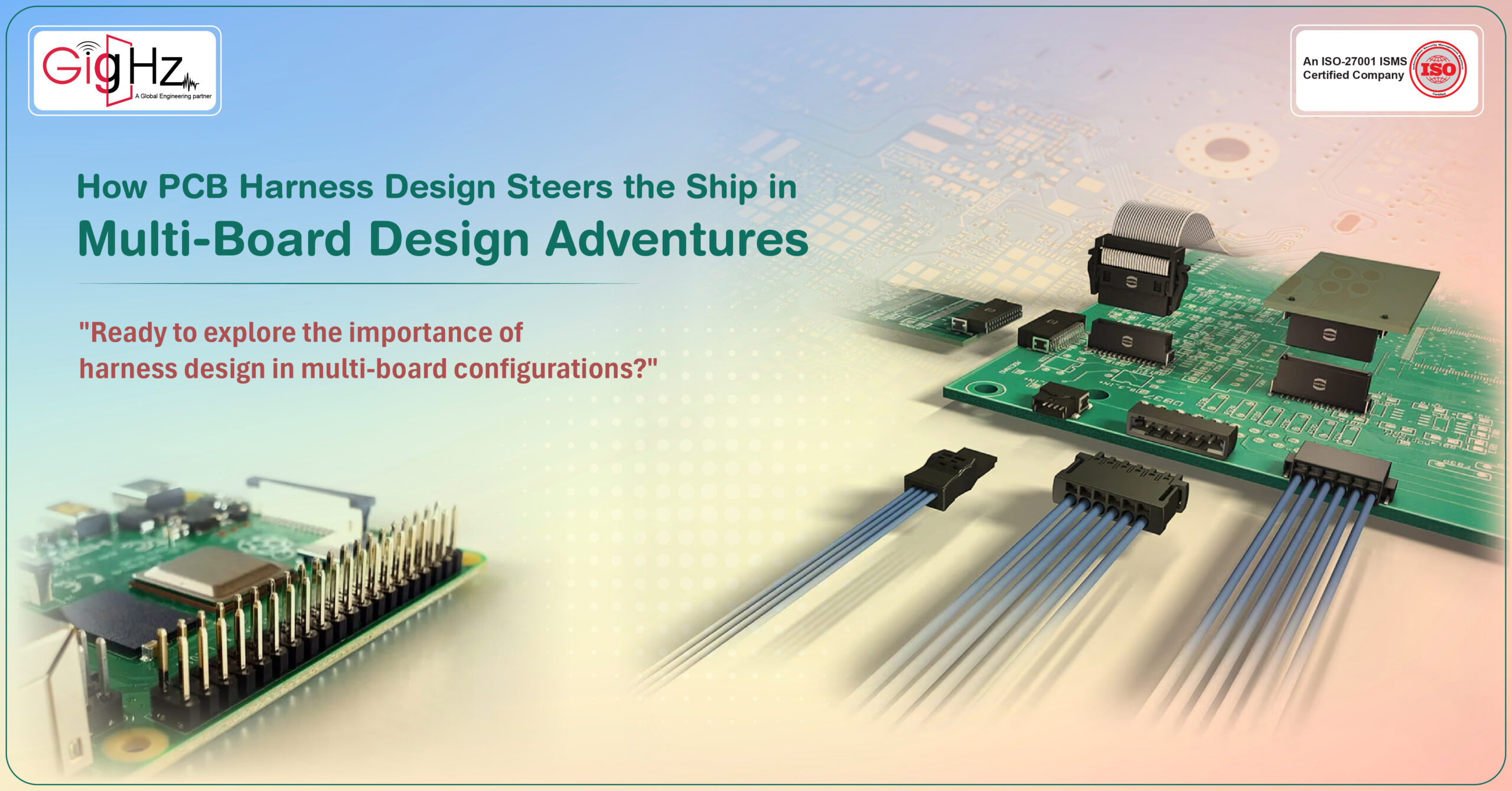
Hello tech enthusiasts, circuit wizards, and engineers!
Today, we’re going to embark on a journey through the complex maze of multi-board design. The captain of our ship? PCB Harness Design.
This powerful harness design is steering us towards innovative solutions, simplifying the intricate process of designing electronic systems spread across multiple boards.

Category :
Published Date :
February 20, 2024
Category :
Published Date :
February 20, 2024
Category :
Published Date :
February 20, 2024
Before delving into the specifics, let us first grasp the concept of harness design.
A PCB harness refers to a collection of wires or cables that connect different PCBs within a system.
It acts as the nervous system, facilitating communication and power distribution between various boards.
Harness design involves meticulous planning, routing, and organization of these interconnections to ensure optimal performance, reliability, and ease of maintenance.
Traditionally, electronic systems were built using single-board designs. However, as technology advanced and demands for compact, high-performing electronics increased, multi-board design became the new norm.
Despite its many advantages, such as modularity and better system organization, multi-board design also brought about a jumble of challenges.
Designers faced difficulties in managing interconnections between boards, ensuring compatibility, and maintaining overall system coherence.
This is where PCB harness design stepped in, offering a way to effectively navigate the multi-board design.
In this blog post, we will delve into the importance of harness design in multi-board configurations, examining its technical intricacies,
Why Multi board Designs?
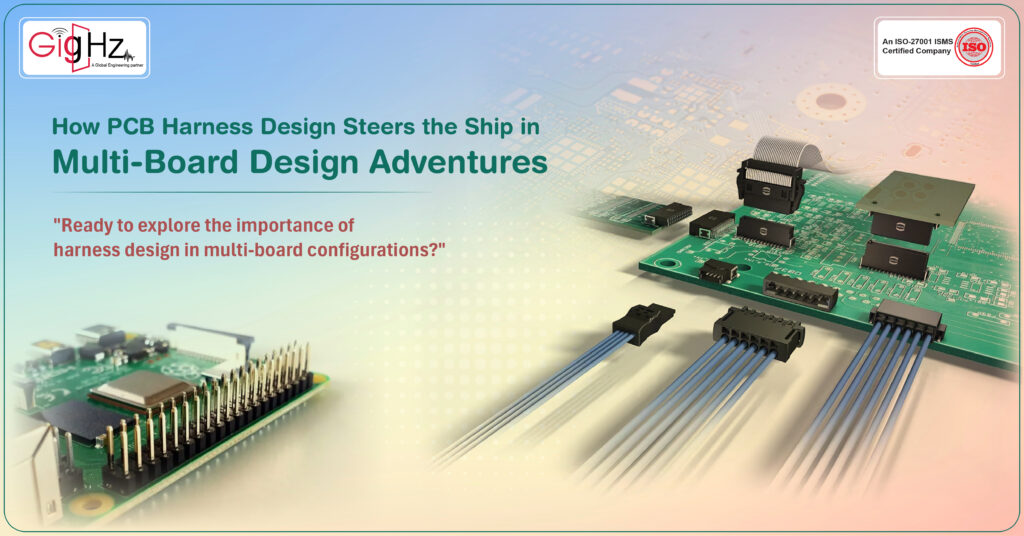
As electronics continue to morph into smaller, faster, and more powerful devices, designing their systems becomes a little more complex. One solution is partitioning systems across multiple printed circuit board (PCB) designs.
This concept of multi-board design has numerous benefits such as easier development and testing of individual components, facilitating reuse of modules across different projects, and the ability to optimize the performance of each board for its specific function.
Another benefit of multi-board design is that replacing or upgrading a single board in a multi-board system is generally more cost-effective than redesigning an entire single-board system.
Plus, it is better for heat dissipation as spreading components across multiple boards can aid in managing heat dissipation more effectively. PCB Design plays a significant role in the evolution of electronics by allowing an easier, smarter, and more cost-effective way to design and develop various systems.
Mastering Interconnections: A Key to Seamless Collaboration
Welcome to the world of multi-board design, where effective interconnection management is essential. Designing and maintaining multiple boards can be a daunting task, even for experienced engineers.
But fear not!
PCB Harness Design is here to save the day. This ingenious solution allows engineers to effortlessly connect boards, ensuring seamless communication. With precision and accuracy, interconnections can be defined and tracked, resulting in a fully integrated system that operates flawlessly.
No matter the complexity of your project, PCB Harness Design offers invaluable benefits. Say goodbye to errors and hello to smooth and efficient operations. Don’t underestimate the power of PCB Harness Design!
Multi-Board Designs in Real-World Application
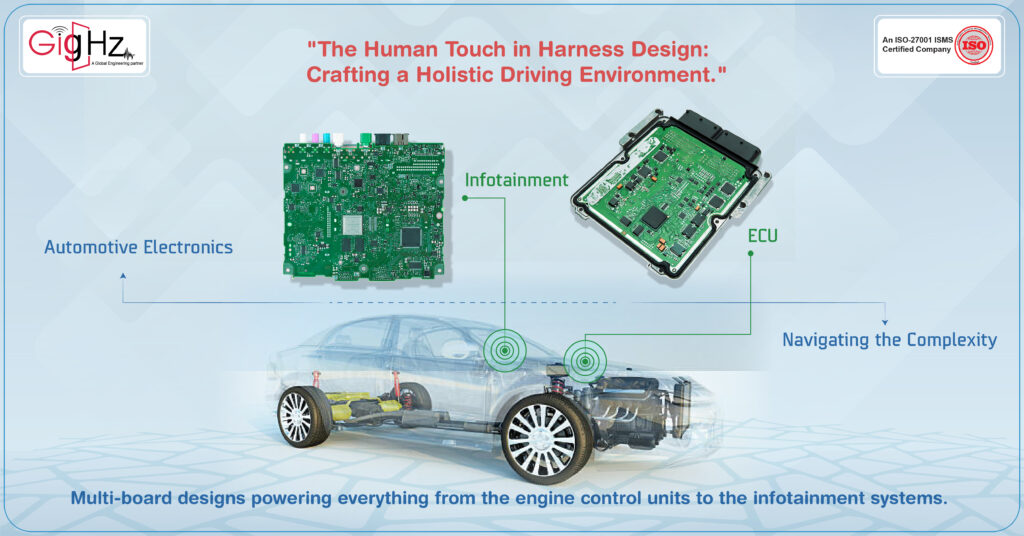
Automotive Electronics: Navigating the Complexity
You’re cruising down the highway in your car, your favourite music playing through the speakers, the engine humming smoothly under the hood.
Behind all of this comfort and convenience is a complex network of multi-board designs powering everything from the engine control units to the infotainment systems. It’s like the car’s hidden nervous system, connecting everything together.
In the automotive industry, designing these multi-board systems is no small feat. The harness design has to withstand extreme temperatures – think sizzling summer heat and freezing winter cold. Plus, it must be robust enough to handle constant mechanical vibrations as you drive over different terrains. And let’s not forget about electromagnetic challenges.
But amidst all this complexity, there’s a human touch that shines through. Designers must consider user comfort and safety, crafting a holistic environment within the vehicle. It’s about creating a seamless experience for you, the driver, ensuring that every journey is safe and enjoyable.
Our Notable Upgrade: Engineering as a Service (EaaS)
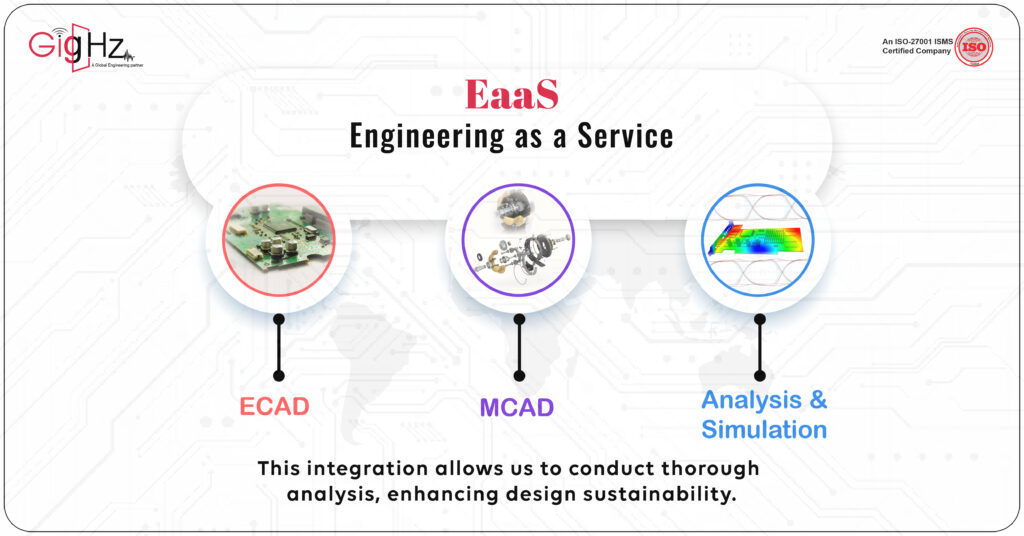
At GigHz, we take pride in offering comprehensive services that include ECAD, MCAD, analysis, and simulation.
These elements are vital parts of what we do, allowing us to provide exceptional value to our clients.
We harness the power of advanced technologies and simulation tools to enhance our design processes.
By following industry best practices and leveraging our extensive expertise, we ensure that our outcomes meet the highest standards of quality and performance.
Thorough analysis is at the core of our approach, enabling us to deliver designs that surpass expectations.
now, as the need for advanced and integrated engineering solutions keeps soaring, our Engineering as a Service (EaaS) are really stepping up the game.
We’re harnessing the power of ECAD, MCAD, and Analysis & Simulation. This gives us a great position to be frontrunners in this industry.
What’s really cool is that we offer a full package covering every single step of the engineering process.
And honestly, it’s this kind of approach that’s going to shape the future of our engineering.
It’s exciting stuff!
Why we do?
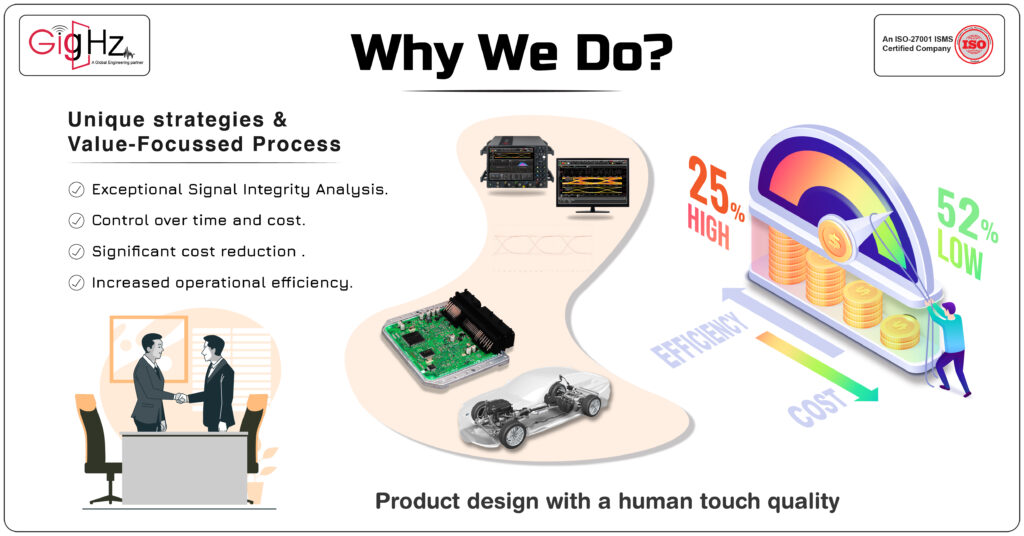
We embrace the challenge of providing exceptional ECAD capabilities.
Our goal is to help you maintain control over both time and cost, all while elevating the quality of your product design with a human touch.
Despite the challenges in technology, we stand out from the competition due to our innovative methods and value-driven process.
This approach enables us to achieve a significant cost reduction of 52% while simultaneously increasing operational efficiency by 25%.
Conclusion
PCB harness design is a unique mixture of technical precision and creative beauty. Each multi-board design presents its own set of challenges and opportunities, requiring both the knowledge and creative abilities of the designer to build sustainable solutions.
As engineers continue exploring multi-board designs, craftsmanship will be key in providing specialized attention to each element and ensuring that power distribution, signal integrity, reliability, thermal management, and EMC compliance are addressed accordingly.
When approaching complex designs with flair, we celebrate the merger of human intuition and technological haptics.
We look forward to seeing what could be achieved in the ever-evolving universe of multi-board designs—our best innovations yet!
To get started on your own creative journey to discover a perfect mesh between technology and humanity, reach us info@gighz.net or follow our founder on social media https://www.linkedin.com/in/chandra-thimma/recent-activity/all/ for cutting edge content insights.
#PCBDesign #ElectronicsEngineering #CircuitDesign #ElectricalEngineering #ElectronicComponents #SchematicDesign


